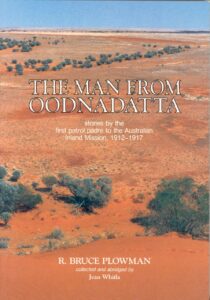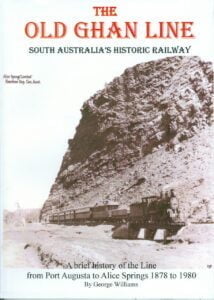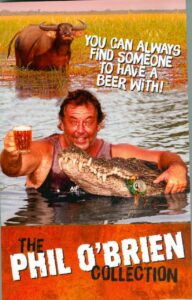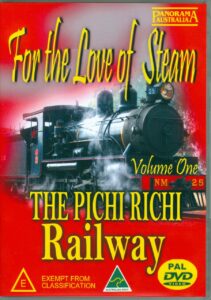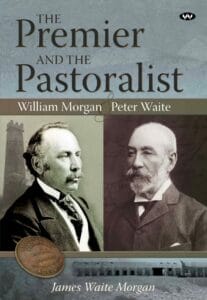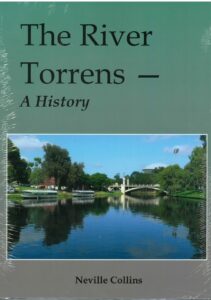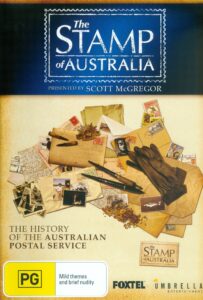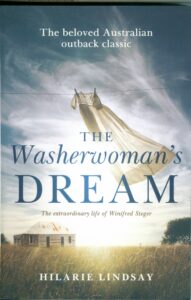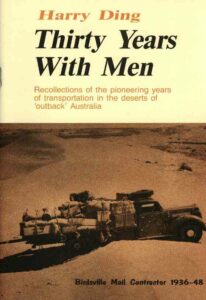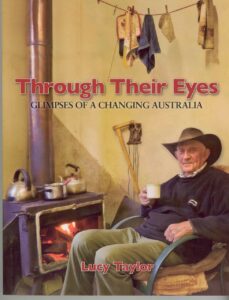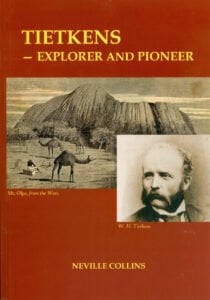Shop
Robert Bruce Plowman was born at Melbourne in 1886 and educated at State schools and at Scotch College there. He was from 1912 to 1917 patrol padre in Central Australia for the Australian inland Mission, and his experiences in that region are recorded in pleasing prose in the trilogy which began with “The Man from Oodnadatta”.
Read MoreIt is a book about the people, men and women, who tried to make a living in this rugged, isolated and semi-arid area. It describes the often insurmountable problems of the many copper, gold, silver and coal mines, and also the battlers, dreamers, promoters, investors, swindlers and losers who contributed to the development of these mines in a remote and hostile environment.
Read MoreGeorge Williams joined the South Australian Railways at Quorn in 1922, but was immediately sent to Oodnadatta as a youth labourer to the pumper. After 14 months he was transferred to Quorn and worked as a cleaner in the Loco Workshops.
On the 1st January, 1926, he signed over to the Commonwealth Railways and in the same year qualified as a fireman. George qualified as a driver in 1929, but was not classified until 1938.
A very entertaining collection of stories in the life and times of outback raconteur Phil O’Brien A ‘Best of’ Collection taken from his popular bestselling books,
101 Adventures that have got me Absolutely Nowhere’ Volumes 1 & 1 and ‘The Minor Successes of a Bloke that Never Had a Real Lot of Luck’
Read MoreWhen we think of trains we think of steam trains, those wonderful mechanical marvels that for more than fifty years huffed and puffed their way across the continent.
Ride with us through South Australia’s Flinders Ranges aboard the Pichi Richi Society’s Afghan Express, the Pichi Richi Explorer and Steam Motor Coach One, affectionately called “The Coffee Pot” as our cameras capture the romance and grandeur of a bygone era.
Meet the Conductors, Guards, Firemen, Drivers and the dedicated volunteers whose passion for steam keeps these magnificent relics of yesteryear running on the rails.
Read MoreOnce upon a time in South Australia, politics had no parties and pastoral country no fences. In the mid-nineteenth century, William Morgan and Peter Waite from Bedfordshire and Fife arrived to fill the vacuum: Morgan helped provide stability for ‘reproductive works’ so that railways snaked across the new colony, cultural institutions took shape and the mighty Torrens was dammed; while with a shipload of high tensile wire and big dams Waite set up the arid zone for sheep.
Each experienced vicissitudes. Waite’s Cordillo Downs, Australia’s biggest sheep station with its buttressed stone woolshed in the remotest corner of the colony, did not survive as such. For politician Sir William Morgan, mining ventures in New Caledonia brought failure and eventual bankruptcy: he died aged fifty-four leaving no money but descendants who have made their mark in many fields, especially mining. His friend and neighbour, Peter Waite, lived to a great age – and his one grandchild married Morgan’s grandson. So the name of Waite has died out but lives on in his gift to South Australia and the University of Adelaide of his house and estate to found the Waite Agricultural Research Institute.
The Premier and the Pastoralist tells the fascinating story of these pioneering South Australian men.
Read MoreThe Rier Torrens has a unique place in the history of South Australia, for it was near its course between the Adelaide Hills and the coast that the first surveyor General of the state, Colonel William Light, chose as the site for the capital, Adelaide.
In this book the author, Neville Collins, traces the course of the river from the hills to the sea and the developments which have occurred on it path since European settlement.
His account is complemented by numerous photographs that capture the river and its surroundings.
It should be a useful addition for those interested in the history of South Australia.
Read MoreBob grew up with a love of Banjo Paterson, thanks to his dad who recited Banjo’s poems to him from an early age. As an only child, and with no kids on adjoining farms, his early years were spent in a mainly male environment listening to all the stories related by his neighbours and dad. Those yarns would later be the subjects of some of his poems. After escaping school he picked up a handpiece and went shearing for the next ten years as well as breeding fat lambs on the small family farm and began putting shearing shed yarns into verse to amuse his dad. In his mid-twenties he purchased some adjoining land, built a dairy on the growing property and spent the next 17 years milking cows as well as breeding sheep. When his sons chose not to join him on the farm Bob had amid-life meltdown and starting writing bush verse in the dairy. To get him to regain his sanity his wife encouraged him to lease out the dairy part of the farm and pursue his dream of becoming a bush poet.
While distributing his first book in 1991 he discovered the Tamworth Country Music Festival and the fledging bush poet breakfasts at the Longyard. Blown away by the poets who were performing their poems from memory, Bob returned home from his first visit highly motivated to lift his game.
Twice winner of the prestigious Bronze Swagman award for written bush poetry at Winton. Queensland, and collecting four Bush Laureate Awards for written and audio work at Tamworth, Bob is in demand for festivals and corporate work all over Australia. Sheep dags and cow manure are a distant memory!
Read More
In an era of technological communication, where emails and social network platforms have become ingrained in the status quo, “The Stamp of Australia” is a refreshing love letter to the past, detailing the manner in which Australians have communicated with each other and the world over the past 200 years.
Read MoreThe Story Behind the Scenery is written for tourists, campers, cyclists, hikers, and grey
nomads. In it, two expert geologists guide you through the heart of Australia’s fascinating
geological history.
This is the remarkable story of an extraordinary life. Winifred Steger was born in England in 1882. To break the cycle of poverty her father takes part in a land grab and books a passage for his family to head for Australia, work the land and strike it rich.
Arriving in Australia, Winifred and her father find that their land grant is covered with a prison of prickly pear and is worthless. Faced again with poverty, endless backbreaking work and isolation in an unfamiliar country, Winifred’s father spirals into depression and alcoholism leaving Winifred emotionally along. From skivvy in a bawdy house to loveless marriage, Winifred battles almost insurmountable odds to maintain her dignity and sanity, finding solace as she creates fictitious scenarios to ease her hardship.
The Washerwoman’s Dream is an epic story that could easily be the stuff of fiction. Hilarie Lindsay has meticulously researched and reconstructed Winifred’s life through her memoirs, newspaper articles, short stories, letters and 14 unpublished novels. This is an account of the amazing life of a forgotten Australian writer and a woman with indomitable spirit.
Read More
‘In language and content this book of an Australian airgunner’s war is strong meat. But it bears on every page the stamp of authenticity and can be thoroughly recommended for the graphic, unblinkered insights it gives into the author’s three years’ experience in RAF bombers … this vivid, often brutal book … is vastly entertaining, with many humorous passages – and some sultry ones, too, on the amatory side of life in wartime England.’
LESLIE JILLETT, Sydney Morning Herald
Read MoreRecollections of the pioneering years of transportation in the deserts of OUTBACK Australia.
Memoirs of a man starting with a horse and cart, who pioneered a reliable outback transport service, including the Birdsville Track mail run for twelve years
Read MoreMany Jobs that were once part of everyday society no longer exist. Tales from a crocodile hunter, tin miner, blade shearer and karri timber-getter reveal an adventures pioneering spirit. Rural towns have disappeared from the nation’s maps like Wilson in the Flinders ranges and Old Adaminaby in the Snowy Mountains. Former residents tell how this came about.
Read MoreAt the time of his death in 1933 at the age of 89 years, William Harry Tietkens was described as ‘probably the last of the old school of Australian explorers’.
It was high praise for one who had arrived in Australia as a 15 year old boy and then abandoned by his guardian on the goldfields of Victoria to fend for himself.
The comment placed him up with exploring luminaries such as Stuart, and many others who conducted explorations in the late 1800s. It was high praise indeed for a man who is virtually unknown to many readers of Australian history.
Perhaps this was because on two occasions he was second in charge of major expeditions led by a better known explorer (Emest Giles) and, as is common in such circumstances, all fame is credited to the person in charge.
Read More